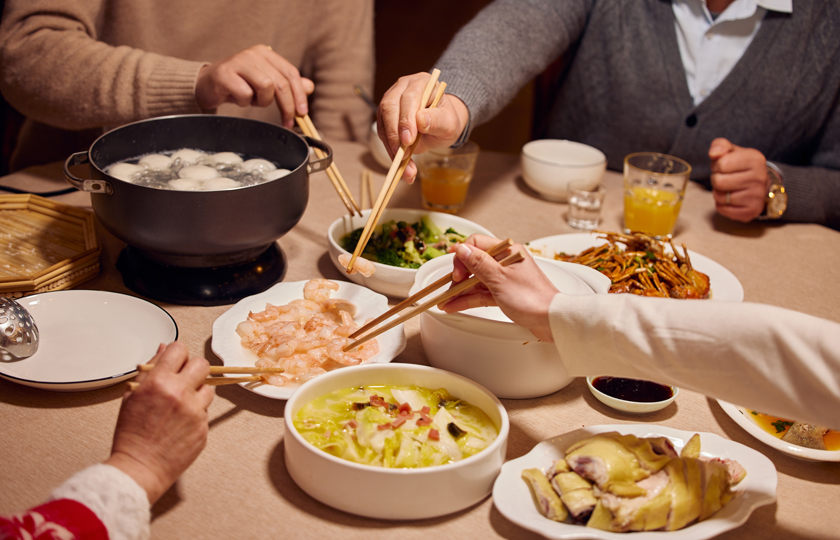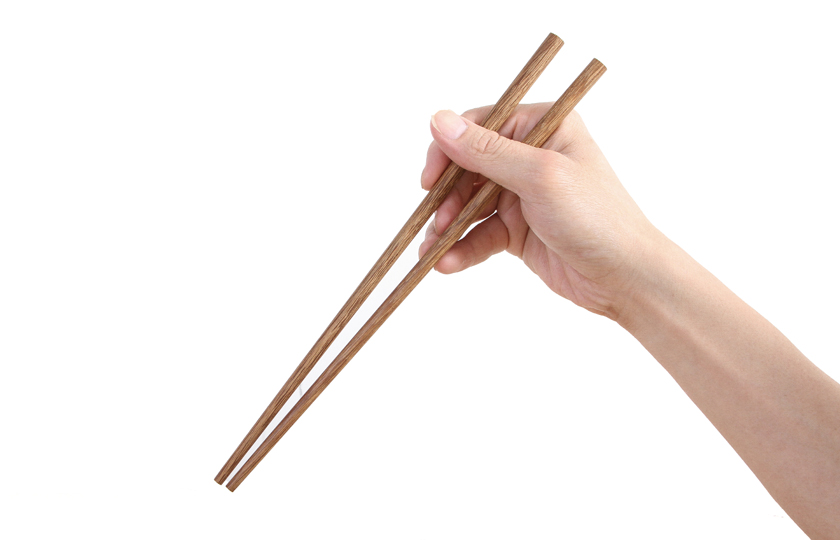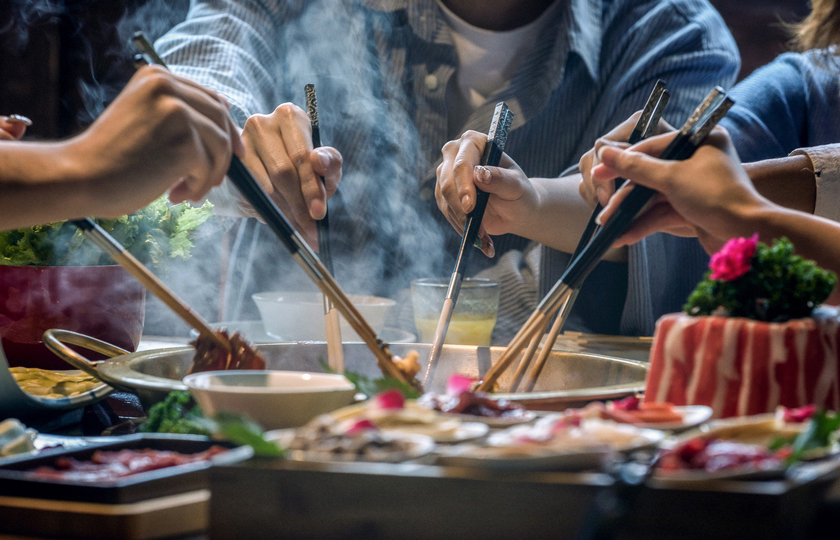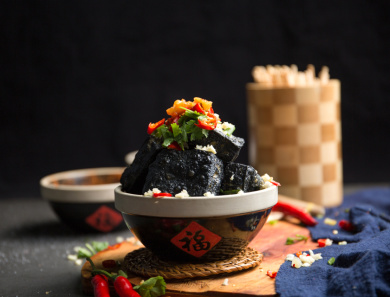7 Rules for Using Chopsticks

Today, I want to share some stories about chopsticks—these little tools have given me so many funny and unforgettable memories growing up.
I remember once going to a relative’s wedding. It was such a lively event with a feast laid out on the tables, filled with delicious dishes that made my mouth water. I was so excited to dig in! When they brought out the sweet and sour fish—one of my all-time favorites—I grabbed my chopsticks right away, eyes fixed on that dish, determined to get a big, tender piece. Just as I was about to pick it up, my friend beside me called my name, which made me lose focus for a split second. My chopsticks slipped “playfully,” and not only did I miss the fish, but I also accidentally knocked over a nearby bowl of soup. The soup splashed and almost landed on the person sitting next to me! Embarrassed, I quickly sat down with my face turning bright red. Luckily, everyone was kind and just laughed it off. I joined in with an awkward chuckle too. Ever since that day, I’ve been extra careful and focused whenever I use chopsticks and pay more attention to my table manners!
But let’s get back on track—now, let’s dive into all the interesting things about chopsticks!
Introduction to Chopsticks
Chopsticks are typically made from bamboo, wood, metal, or plastic. They’re of moderate length, with both ends the same thickness and a slight taper in the middle, making them easy to grip. With a history stretching back over 3,000 years to the Shang Dynasty, chopsticks are more than just utensils for picking up food; they are a cultural symbol that represents respect for food and a love for life. In formal settings, like family gatherings or business dinners, using chopsticks properly reflects personal etiquette and cultural appreciation.
7 rules for using chopsticks
1.Don’t stick chopsticks upright in food.
In traditional culture, this is considered unlucky because it resembles the way incense sticks are placed during ancestral offerings. Doing this at the table can be seen as disrespectful to the food and could carry a negative meaning. From a hygiene perspective, sticking chopsticks upright can also introduce bacteria into the food. So, it's best to avoid it!
2.Avoid pointing chopsticks at others.
Pointing at someone with chopsticks is seen as rude and can create misunderstandings or tension. A friendly atmosphere at the table is important, so using chopsticks or any utensil to gesture at someone is best avoided—it may even affect others' appetites!
3.Don’t cross chopsticks on the table.
Placing chopsticks in a crossed position on a bowl or plate looks messy and can impact food hygiene. Instead, lay them neatly at the edge of your bowl or plate to keep the table looking tidy and reduce the spread of bacteria. Crossed chopsticks can harbor bacteria, while aligned ones help prevent this.
4.Avoid digging through food with chopsticks.
It's generally considered impolite to rummage through a dish with chopsticks; it disrupts the food’s presentation and might affect its flavor and hygiene. If you’re looking for something specific, it’s better to ask politely. Digging around can also mix flavors on the chopsticks, which might disrupt the dining experience.
5.Don’t hold chopsticks in your mouth.
Leaving chopsticks in your mouth looks unsightly, can be seen as impolite, and might even affect others' enjoyment of their meal. Plus, holding chopsticks in your mouth can introduce bacteria, which may lead to oral health issues. Food particles and bacteria on the chopsticks can pose a health risk, so it’s best avoided.
6.Don’t tap chopsticks against bowls or plates.
Tapping chopsticks on dishes is considered very disrespectful and can disturb others at the table. In ancient times, this was associated with begging behavior. Tapping can also damage the dishes and, if chopsticks are dirty, it might spread grime. Avoiding this behavior is courteous to everyone dining.
7.Avoid resting chopsticks across the top of the bowl.
Placing chopsticks across the top of your bowl is informal and can make the table look messy, also impacting food hygiene. Instead, place them on a chopstick rest or at the edge of your bowl. This helps maintain cleanliness, as chopsticks won’t come into contact with food residue inside the bowl, reducing the risk of health issues.

Proper Chopstick Technique
1.Hand Positioning
Finger Placement: Place your thumb near the top of the inner side of the chopsticks to stabilize, resting your index finger on top to control the opening and closing motion. The middle finger supports in the center, while the ring finger and pinky naturally curve to help grip. Avoid incorrect grips like holding the chopsticks only between the thumb and middle finger, as it reduces control.
2.Grip Pressure
Hold the chopsticks with a balanced grip—not too tight, which causes stiffness, and not too loose, which leads to slippage. Practice picking up various objects to find the right grip pressure.

Chopstick Etiquette
1.Before Dining
Placement Etiquette: In formal settings, place chopsticks on a rest to the right of the plate, with tips pointing to the left, ensuring they are clean and undamaged. If no chopstick rest is available, neatly lay them along the right edge of the plate.
Waiting Etiquette: Avoid playing with chopsticks or tapping on the table while waiting for food, as it creates noise and may come off as impatient.
2.During the Meal
Serving Etiquette: When taking food from shared dishes, start with items closer to you without picking through or stirring the dish. If you take more, place it in your bowl for a tidy setting.
Techniques for Different Foods:
Chunky Items: When picking up larger pieces, like meat, apply moderate pressure at the center or a stable spot to avoid dropping.
Vegetables: Grip from the root or densest part to prevent slipping.
Slippery Foods: For items like noodles or meatballs, gently squeeze and lift from the side or bottom.
Small Foods: For rice or peanuts, align the chopsticks and carefully gather the food.
Passing Food: When offering food to others, use communal chopsticks if available. If not, place the item in your bowl first to prevent cross-contamination.
3.After the Meal
Resting Etiquette: Once finished, neatly place your chopsticks on the rest or on the right side of the plate as originally set. If there’s residue on the chopsticks, wipe it off against the plate’s edge to keep things clean. Avoid tossing chopsticks on the table, as proper placement shows respect and courtesy.
The Symbolic Design of Chinese Chopsticks
1.Shape Significance
Rounded Top, Square Bottom - Philosophy of "Round Heaven and Square Earth":
Traditional Chinese chopsticks often have a rounded top and a square bottom, symbolizing the ancient Chinese concept of "round heaven and square earth." In Chinese culture, "round" represents the heavens, movement, change, and cycles—like celestial motion and seasonal changes—while "square" represents the earth, stability, and rules. This design integrates cosmic and natural philosophies into a daily utensil, reflecting ancient perspectives on the universe and the natural world.
Harmony and Order:
The shape also signifies harmony and order. The round top aligns with flexibility and adapting to nature’s rhythm, while the square bottom emphasizes following rules and grounding oneself in principles, symbolizing the balance between conforming to natural law and adhering to social norms.
2.Length Symbolism
Cultural Respect - Length around 25 cm:
The standard length of chopsticks, roughly 25 cm, carries cultural significance. In traditional Chinese culture, "seven-foot man" (symbolizing dignity and masculinity) resonates with the chopsticks' length, representing respect for the role of dining in daily life and underscoring the cultural reverence for food.
Social Distance and Etiquette:
The moderate length allows diners to reach food at communal meals while maintaining a comfortable social distance, enhancing interactions without intruding on personal space.
3.Material Symbolism
Bamboo and Wood - Natural Harmony and Virtue:
Bamboo and wood chopsticks are most common, symbolizing humans’ closeness to nature, embodying the "unity of man and nature" belief. Bamboo specifically represents virtues like resilience, humility, and integrity, encouraging diners to embrace these values in daily life. Other woods, such as rosewood and sandalwood, signify dignity and longevity, infusing chopsticks with cultural depth.
Metal - Strength, Prestige, and Legacy:
Metal chopsticks, such as silver or gold, signify durability and rarity. Historically used by the noble class, they represent prestige and were sometimes believed to detect poison. Metal chopsticks also symbolize family legacy, as they often become heirlooms passed through generations, carrying family history, pride, and tradition.
In short, chopsticks carry rich cultural significance, and using them correctly honors traditions while showing poise and respect at the table.























